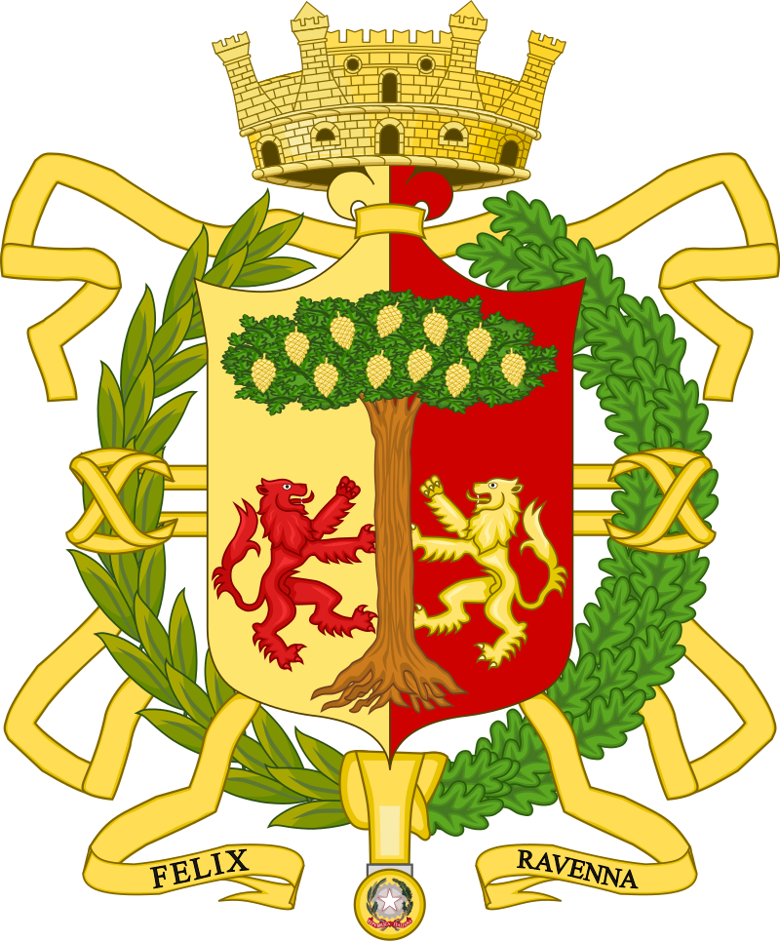
395 AD: The death of Theodosius I, which resulted in the division of the Roman Empire between his two sons, Arcadius and Honorius. The Eastern Roman Empire (Byzantine Empire) and the Western Roman Empire. This division weakened the imperial authority and contributed to the eventual fall of the Western Roman Empire.
The Eastern Roman Empire had its capital in Constantinople (formerly Byzantium, modern-day Istanbul) and encompassed territories in the eastern Mediterranean, Anatolia, the Balkans, and parts of North Africa. The Eastern Empire retained many of the bureaucratic, legal, and administrative structures of the Roman Empire and continued to thrive for centuries after the Western Roman Empire fell.
The Western Roman Empire had its capital in Ravenna and controlled territories in Western Europe, including Italy, Gaul (modern-day France), Hispania (modern-day Spain and Portugal), and Britannia (Britain).
Ravenna, located in present-day Italy, was an important city in the Western Roman Empire before its fall. It served as the capital of the Western Roman Empire from 402 AD until the empire's collapse in 476 AD. Ravenna's strategic location on the northeastern coast of Italy made it a significant political, military, and economic center.
One of the reasons Ravenna was chosen as the capital was its defensive advantages. The city was surrounded by marshes and was difficult to attack, providing a measure of protection against invading forces. This was particularly important during a time when the empire was facing increasing pressure from barbarian tribes.
Under the rule of Emperor Honorius, Ravenna experienced a period of significant development and construction. Many impressive buildings and monuments were erected during this time, leaving a lasting architectural legacy. One of the most notable structures is the Basilica of San Vitale, known for its stunning Byzantine mosaics that depict biblical scenes and figures.
Ravenna also became a center of Christian religious life. Several early Christian churches were built in the city, and it played a crucial role in the development of Christian art and architecture. The city's churches, adorned with intricate mosaics, showcased the wealth and cultural sophistication of the Western Roman Empire.
Ravenna was a hub of political activity. Emperors, military commanders, and high-ranking officials resided in the city, overseeing the affairs of the empire. The imperial court attracted scholars, intellectuals, and artists, contributing to a vibrant cultural scene.
Fifteen Years Later
410 AD: The sack of Rome by the Visigoths under the leadership of Alaric. This event is often seen as a symbolic moment marking the vulnerability and decline of the Western Roman Empire. It experienced invasions by various Germanic tribes, such as the Visigoths, Vandals, and Ostrogoths, as well as internal power struggles and economic crises. These factors ultimately led to the deposition of the last Western Roman Emperor, Romulus Augustus, in 476 AD, marking the end of the Western Roman Empire.
Sixty Six Years Later
The deposition of Romulus Augustus, the last Western Roman Emperor, by Odoacer, a Germanic chieftain. This event is commonly considered the end of the Western Roman Empire.
Odoacer was a barbarian soldier and statesman from the Middle Danube who deposed the Western Roman child emperor Romulus Augustulus and became the ruler of Italy (476–493) Although he held power over Italy, he also represented himself as the client of the Eastern Roman Emperor in Constantinople, Zeno. The imperial government had no choice but to face the facts, and thus the new master of Italy was appointed magister militum per Italiam and received the administration of the Italic peninsula as viceroy of the Emperor, who thus became the theoretical ruler of a reunified Roman Empire. The Leonid dynasty produced six Roman emperors during Late Antiquity, reigning over the Roman Empire from 457 to 518.
Almost 1000 Years Later
The Roman Empire will fall In 1453, the Byzantine Empire was ruled by Emperor Constantine XI Palaiologos. The Ottoman Empire, led by Sultan Mehmed II (also known as Mehmed the Conqueror),
Mehmed II assembled a massive army and launched a siege on Constantinople on April 2, 1453. The Byzantine defenders, vastly outnumbered and with limited resources, put up a valiant resistance. However, after a grueling 53-day siege, the city's defenses were breached on May 29, 1453.
The Ottoman forces stormed into the city, causing widespread destruction and chaos. Emperor Constantine XI fought bravely but was eventually killed in the final hours of the battle. The fall of Constantinople marked the end of the Byzantine Empire, which had endured for over a thousand years since the fall of the Western Roman Empire.
Comments
Post a Comment